College Radio Celebrates 73 Years at Otterbein
Posted Mar 05, 2021
WOBN 97.5 FM is Otterbein’s student-run radio station. This year on March 5, student-run radio on campus is celebrating its 73rd anniversary on-air. Through all those years, the music may have changed but their mission of giving students a platform to broadcast has never wavered.
About WOBN
Now known as WOBN, the station can be heard all around campus, in all of Westerville, parts of north Columbus, Worthington, and through streams around the world on WOBN.net. “The Wild Card” has a wide variety of genres and plays local and national musicians, with students selecting music and scheduling programming. WOBN is also the exclusive home of Cardinal athletics, including live football, soccer, volleyball, wrestling, basketball, lacrosse, and baseball games all season long.

“Our first and foremost goal is to educate students,” says WOBN Faculty Advisor Eric Jones. “What we give them is a unique experience on how to best present themselves to an audience and how to speak naturally and confidentially about a subject, song, or idea.”
Students at WOBN learn how to do remote broadcasts and live air shifts on the NexGen Automation system. The production studios contain Mac and PC-based digital editing software. All software lends itself to producing podcasts and digital files in MP3 format. The station is staffed entirely by Otterbein students and all scheduling, promotions, music selection, Federal Communications Commission (FCC) reporting, and overall station upkeep is done by the staff and DJs. Students do not have to be Department of Communication majors to be part of the station.
Junior Hannah Brown serves as the station manager. She said coming into Otterbein as a first-year student she didn’t really have much of an interest in radio. Her introduction to WOBN came from a journalism and media communication class.

“I got to see just how special radio can be to a community, and that was especially noticeable with WOBN. We got to see just how vital and connected to Westerville and campus the station has been and continues to be,” she said. “It’s a fantastic avenue for students to see all the possibilities a communications-based education can provide. It’s not just about writing!”
Brown was given access to hands-on learning at the station right away, something she gives accolades to Otterbein for giving students that opportunity.
Changes Through the Years
The roots of radio at Otterbein started in 1946 when Otterbein College set-up a recording studio and radio booth capable of broadcasting in Towers Hall. On Friday, March 5, 1948, 630 AM WOBC signed on for the first time. The original transmitter was put together from WWII surplus parts and the signal was partially sent out by being connected to the residence hall water pipes. This type of transmitter used the powerlines in conjunction to broadcast a low signal that could be picked up on campus without having an actual AM transmitter.
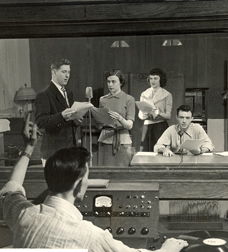
The first major change was to move the studio from Towers to the Cowan Hall basement in 1951, shortly followed by the FCC granting Otterbein an FM license in 1958, prompting the call letters to change to WOBN, which is still used today but at 91.5 FM on the dial.
The change was prompted when the FCC sent a representative to the college to do a check on how much power WOBC was broadcasting with, as there were strict limitations to the amount used to broadcast over the powerlines. The station was broadcasting at two million times more than allowed. The decision was made to apply for the FM license instead of dealing with fines and sanctions. Otterbein University’s yearbook, Sibyl, heralded this transition as a sea change for the listening audience.
“Higher fidelity is the selling point of FM, free from static, fading, and interfering noises,” Sibyl staff wrote that year. “The station can now better fulfill its purpose… as listeners from Westerville and surrounding areas are now included in the WOBN audience.”
That change proved to be historic, as today WOBN is the second-oldest continually running FM station in Ohio. WBNS 97.1 FM began one year earlier in 1957.
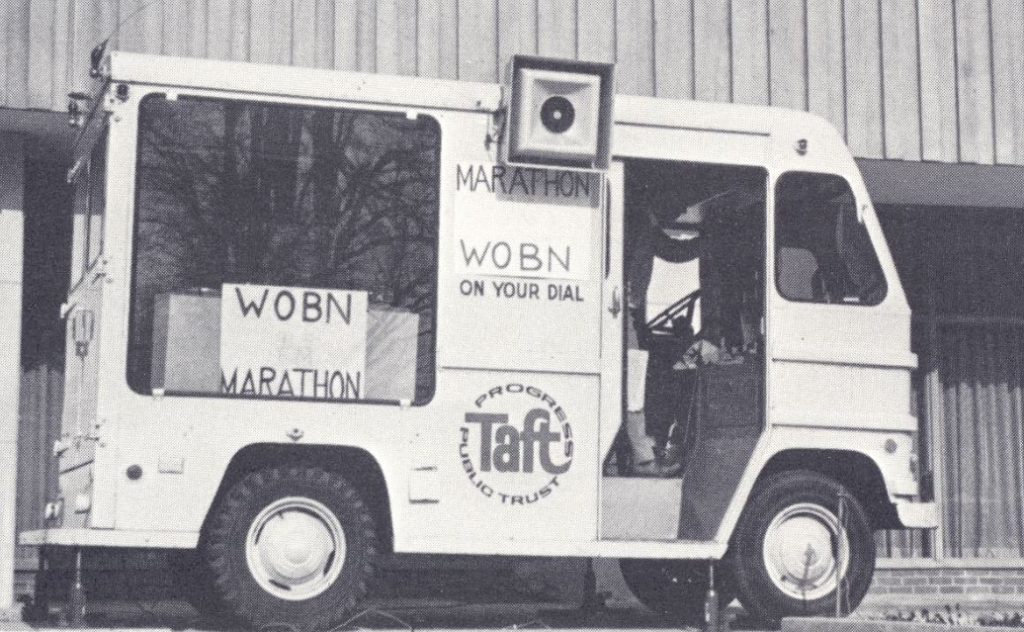
In the 1960s, WOBN began using the Associated Press (AP) news wire service, as the AP says, to “inform the world.” Radio marathons also became part of the campus landscape. In 1966, WOBN hosted the Cap-Otter Marathon, giving 24/7 coverage to the Otterbein and Capitol University rivalry football game. The station broadcasted remotely out of a van on Towers Hall lawn.
The 1980s saw significant upgrades in studio technology, almost a decade in the making. The broadcast booth moved to the Campus Center dining hall as a temporary space during Cowan construction. More significantly, WOBN was notified in the last months of 1989 that they would need to vacate their then-current 105.7 FM location and reapply for that frequency due to deregulation of 100 watt and under stations. An application was filed in Marysville and approved before Otterbein’s application. The station applied for 101.5 FM in April 1990.
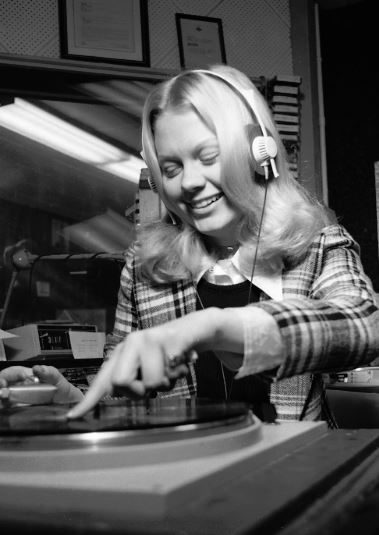
In the 1990s, WOBN become known as 101.5 FM The Rock after the new application was approved. Sports remained a big draw for listenership. In 1993, the days before internet streaming, WOBN launched a 1-800 phone number listeners could call to hear games from anywhere for the charge of any long-distance phone call.
During the rise of MTV, the cable channel began doing quick news updates in between its shows. The Rock began following this model in 1996-97 with “News Nuggets,” bringing students three news stories in 60 seconds during breaks.
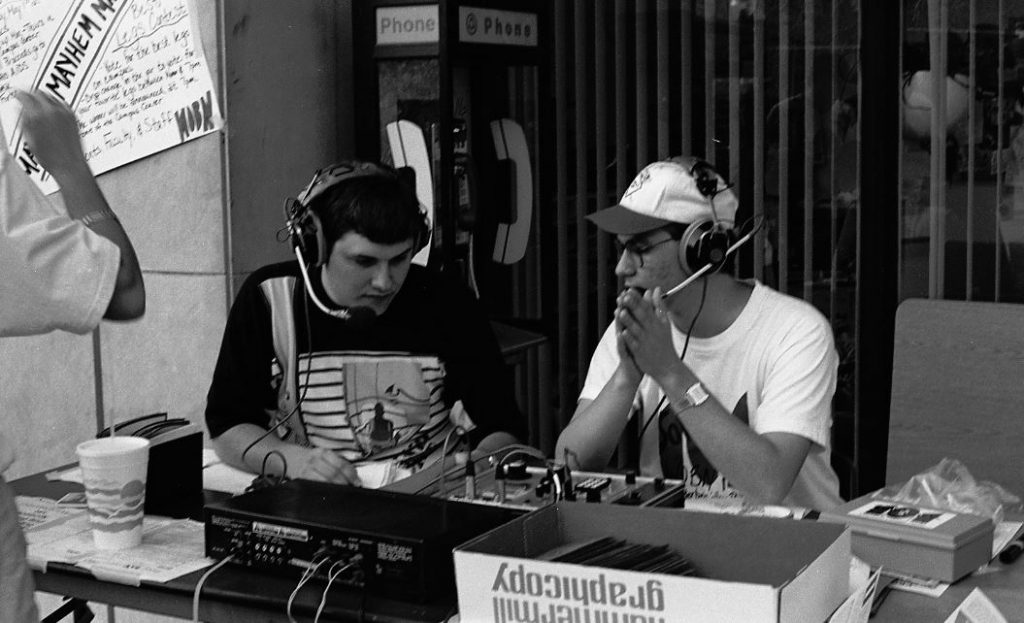
The station moved to its now current broadcast location in the Art and Communication Building in 2007. WOBN officially became 97.5 FM The Wild Card in 2008 when a larger station with the same 101.5 FM frequency moved their transmitter from Newark to Columbus. The FCC granted the change to 97.5 after an appeal by WOBN to keep the frequency was denied. In 201, the station went global with a live stream over the internet at WOBN.net.
Radio During a Pandemic
Every eight years, the FCC requires all radio stations to go through a three-month license renewal process. A station must make on-air public service announcements (PSAs) announcing the process and allowing the listening audience to add their comments to the application. The Emergency Alert System is also tested, and documentation of tests and other station issues must be provided.
Demonstrating to the FCC their service to the community and making the studio usable in the middle of the COVID-19 pandemic provided an additional challenge during the 2020 license renewal year.
“We had to make some major changes to how we approached staff and class scheduling, as well as content production,” said Brown. “We established strict cleaning procedures for studio users to complete during the new 30-minute break between shows. We also extended our studio space with a second room separated by a glass window, keeping the broadcast engineers and DJs safe.”
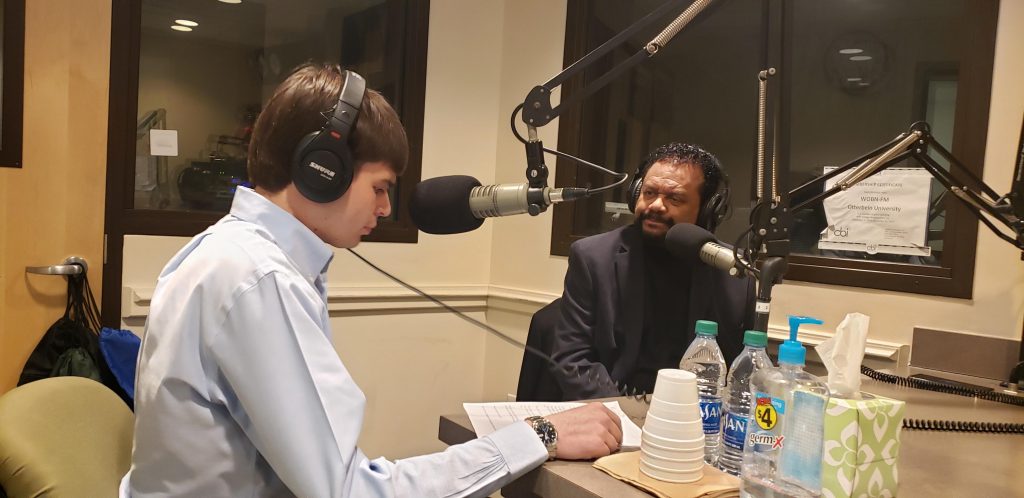
Any other license renewal year, Otterbein athletics plays a significant role in the community service category. With the Ohio Athletic Conference’s decision to suspend all fall sports, WOBN was left with a significant void to fill on the application, so the students got creative.
They dedicated their 24-hour radio marathon for College Radio Day on Oct. 2, 2020, to voting information for local elections all the way up to the presidential contest, PSAs on how and where to vote, and ways to register. Show hosts also reached out to the community for more special guest interviews, including Otterbein President John Comerford presenting his personal playlist and even 1980s rocker Huey Lewis of Huey Lewis and the News.
“It was all about finding new ways to connect with the listeners. Through hard work and our radio family pulling together in a time of need, we made it work despite all the regulations and challenges,” Brown said.
Notable WOBN alumni include MSNBC Senior National Correspondent and Breaking News Anchor Chris Jansing ’78, Public Address Announcer for 20 of the 37 varsity sports at The Ohio State University Bob Kennedy ’87, WBNS-TV Columbus Sports Anchor Dom Tiberi ’80 and Cincinnati Reds and Fox sports Ohio broadcaster Jim Day ’90.
The Future of WOBN
The medium of radio has been declared “dead” or soon-to-be surpassed and forgotten by newer innovations like TV and the internet so many times. Stations have had to continuously adapt to industry changes to stay relevant and on the air. WOBN is no exception.
“COVID-19 caused us to lose a lot of variety in programming,” said Brown. “We had to pare down the number of shows and scale back sports coverage due to seasons begin cancelled. We want to bring those things back and look at showcases for pop culture topics and diversity discussion shows.”
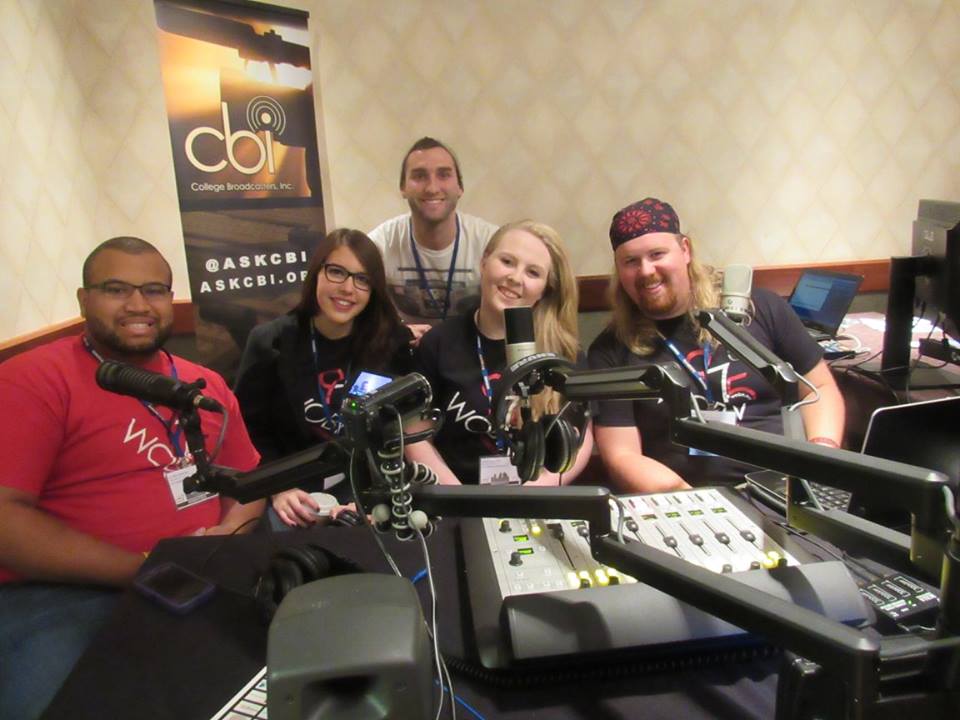
Brown also has recognized how terrestrial radio has had issues with portability thanks to the proliferation of iPods and smartphones. Students and station staff have expressed interest in podcasting to make WOBN more accessible off campus. This area is still being explored as podcasting has different rules and regulations than radio.
Taking up special topics and initiatives will also remain a focus for the station’s future, just as it was during the pandemic. In February 2021, WOBN did special programming and promotional series on Black History Month and will be expanding that to include women’s rights and feminism. Brown says it’s more important than ever to be a trusted voice of the community.
“It’s so important, especially now with the current discourse, to educate and inform our listeners. It helps us with station branding but more importantly increases community understanding and personal growth,” she said.
Beginning with WOBC in 1948 transmitting over the pipes, and to today with WOBN heard around the world streaming live, the mission has always remained the same, and Jones sees no reason that will ever change.
“As long as there are students, we’ll be here. Here’s to the next 73 years being just as inspirational, gratifying, and fruitful!”